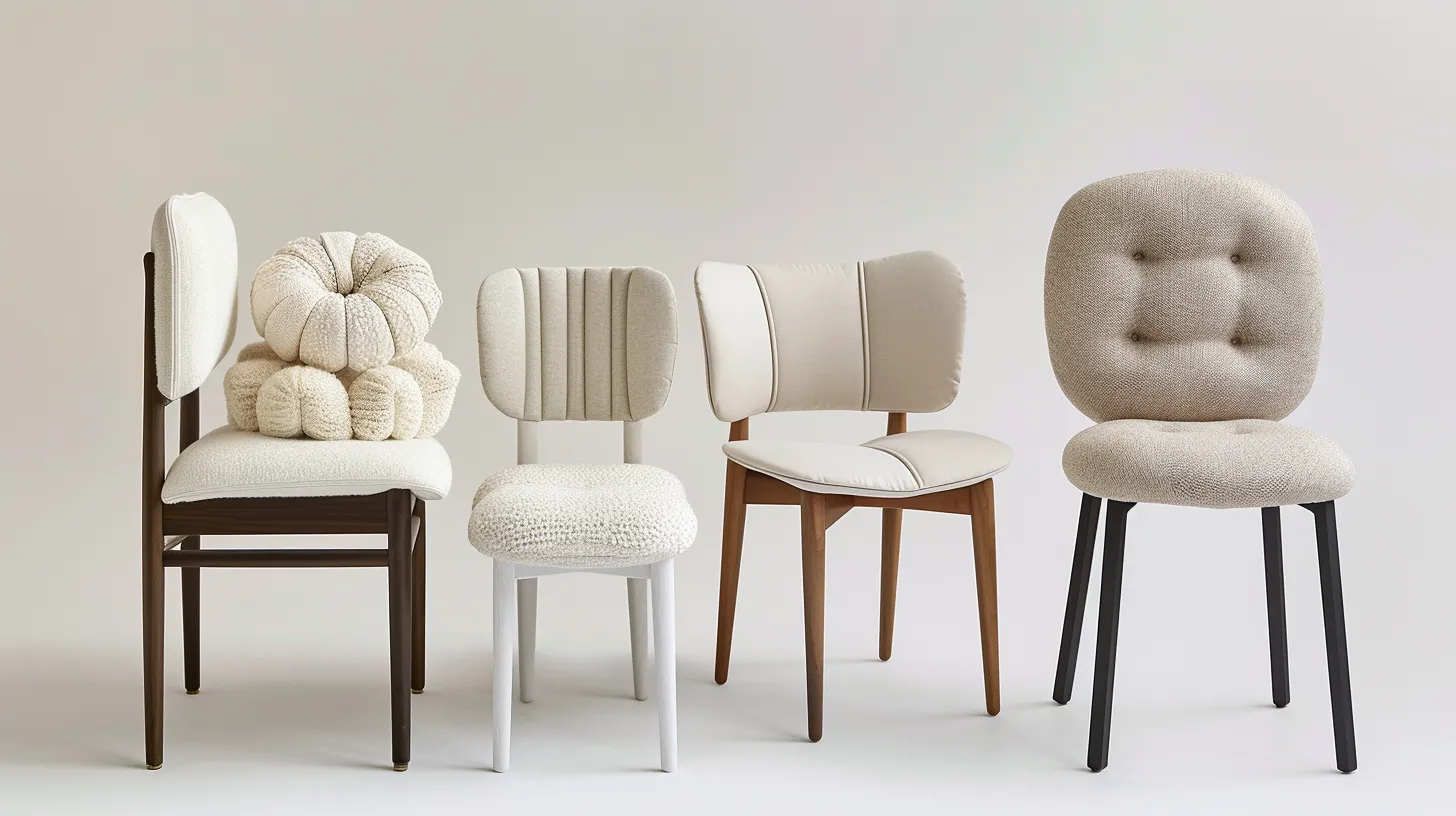The evolution of chair pads reflects our advancing understanding of comfort and ergonomics. Originally simple cushions made from natural materials like wool and feathers, chair pads have transformed greatly. With industrialization , mass production enabled widespread accessibility, while recent innovations leverage materials such as memory foam and gel. These materials contour to body shapes, distribute weight evenly, and improve circulation, aligning with ergonomic principles to enhance spinal health and overall well-being. Modern design now incorporates adjustable features and smart technologies , pushing the boundaries toward personalized comfort and sustainability. Further exploration offers an intriguing glimpse into how these developments impact our daily lives.
Origins of Chair Pads

Chair pads, initially simple cushions in various ancient cultures, were created from readily available natural materials such as wool, feathers, or animal skins to improve seating comfort. Over time, the design of chair pads evolved considerably, reflecting changes in both aesthetic preferences and functional needs. As societies progressed, the concept of comfort became increasingly refined, leading to the development of more sophisticated designs.
The industrialization era marked a pivotal moment in the history of chair pads. Mass production techniques that emerged during this period allowed for the widespread distribution of chair pads, making them more accessible to the general public. This democratization of comfort underscored the importance of ergonomic design in everyday life, promoting a focus on health and efficiency in seating solutions.
Throughout their evolution, chair pads have shifted from mere functional items to integral components of ergonomic design, aiming to enhance user comfort and support. The historical trajectory of chair pads illustrates a change from basic, natural materials to a broader consideration of how design can impact human well-being, preluding the incorporation of advanced materials and technologies that characterize modern ergonomic solutions .
Advancements in Materials

As the demand for ergonomic comfort in seating escalated, significant advancements in the materials used for chair pads have been made. Innovations like Memory Foam and Gel, alongside high-density foam , have transformed simple cushions into sophisticated support systems tailored for various body types and seating preferences.
Memory foam, renowned for its ability to contour precisely to the body's shape, offers exceptional pressure relief . This adaptability guarantees that the foam complements the natural curvature of the spine, promoting better posture and minimizing discomfort during extended periods of sitting. Such features are essential in reducing fatigue and enhancing overall comfort in office chairs and other seating environments.
Gel cushions, on the other hand, are engineered to aid in weight distribution and enhance circulation . The inherent cooling properties of gel technology also help in maintaining a comfortable seat temperature, which is particularly advantageous in warmer climates or during prolonged use.
High-density foam provides the necessary firmness to support and maintain spinal alignment , vital for alleviating strain on the lower back. This type of foam is durable, retaining its shape and support characteristics over time, making it an ideal choice for both home and office furniture that demands longevity and ergonomic support.
Breakthroughs in Design

Recent innovations in chair pad design have greatly enhanced the ergonomic features and customization options available to consumers. Utilizing advanced materials such as memory foam and gel , these ergonomic chair pads provide superior comfort and support, essential for maintaining proper posture . These materials conform to the body's contours, ensuring that the spine remains aligned and pressure on sensitive areas is minimized, thereby preventing potential discomfort during prolonged periods of sitting.
Additionally, the introduction of adjustable features in chair pads allows users to achieve personalized comfort . This adaptability is important for catering to individual ergonomic needs, enabling users to adjust their chair pads for best positioning, thereby reducing the risk of strain and discomfort.
The deployment of innovative cushioning technologies further elevates the user experience by promoting better circulation and reducing fatigue. These technologies are grounded in research-backed design principles , ensuring that each chair pad not only offers comfort but also addresses specific ergonomic needs effectively.
Through these breakthroughs in design, chair pads have transformed from simple cushions into sophisticated supports that actively contribute to health and productivity in work and home environments.
Role of Ergonomics

Ergonomics plays a pivotal role in the design of chair pads , focusing on enhancing user comfort and preventing health issues related to posture . By adhering to principles that align with the human body's natural movements and needs, ergonomic chair design greatly contributes to minimizing discomfort and fostering an environment conducive to productivity and health.
Ergonomic chairs are a key aspect of designing products and environments tailored to individual physiological requirements. These chairs typically feature specialized pads that promote proper alignment of the spine, reduce pressure points, and support the lumbar area , thereby preventing the onset of musculoskeletal problems . Materials like memory foam and gel are commonly employed in these pads to adapt to the user's specific contours, offering personalized comfort and enhanced support.
The integration of ergonomic solutions in chair pads not only boosts comfort but also plays an essential role in enhancing overall well-being . With the adoption of such scientifically backed design strategies, users can enjoy prolonged periods of sitting without the typical adverse effects linked to poor posture and inadequate support, thereby achieving better health outcomes and improved life quality.
Future Trends

Innovations in chair pad design are increasingly focusing on the integration of smart technologies and sustainable materials to enhance user comfort and environmental responsibility. The adoption of recycled foam and organic fabrics is becoming more prevalent, reflecting a shift towards materials that reduce environmental impact while maintaining high performance. Advanced materials science research continues to drive these developments, ensuring that sustainability does not compromise comfort or durability.
The integration of smart technologies into chair pads is revolutionizing how users interact with their seating environments. Features such as personalized comfort adjustments , which allow users to tailor their chair pads to their specific ergonomic needs, are becoming standard. IoT integration plays a pivotal role here, enabling remote control and monitoring of settings to provide top-notch support and comfort seamlessly.
Further enhancing the user experience, customizable features like temperature regulation and massage functionalities are being incorporated, offering not just comfort but therapeutic benefits. These advancements make the modern chair pad an interactive, health-promoting tool in both office and home settings, promising a future where chair pads are central to personal well-being and environmental sustainability .










